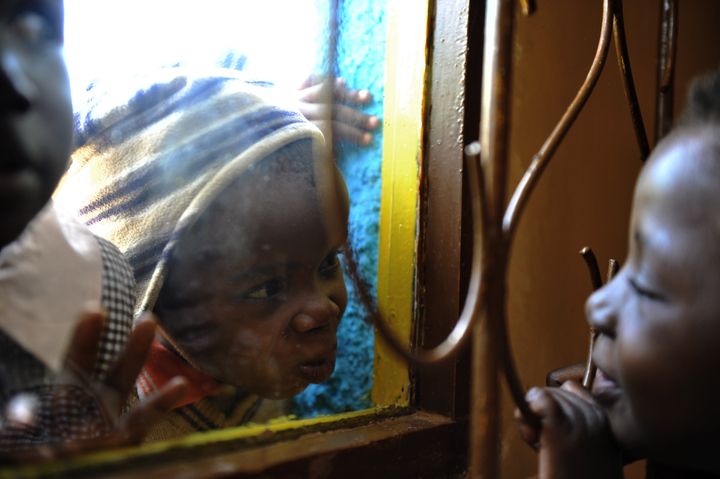
This week, I am visiting the Elizabeth Glaser Pediatric AIDS Foundation's programs in Kenya -- a country with the fourth-largest number of people infected with HIV in the world. In Ndhiwa district of Kenya's Nyanza Province, I stopped by two facilities to see how our work, with support from the U.S President's Emergency Plan for AIDS Relief (PEPFAR), is helping to shape the trajectory of HIV/AIDS among children.
I saw more than 70 children who had been tested and declared free of HIV at 18 months by facilities that have established systems to track the mother-baby pairs and to provide comprehensive HIV services within the first three years of life.
Within three years, Ndhiwa district hospital moved from providing ad hoc HIV services to an organized way of providing integrated HIV services as part of a suite of maternal and child health services. Consistent use of data enabled the tracking of mother-baby pairs to determine and seal loopholes to prevent new HIV infections in children.
Fifteen of the children I saw "graduated" from a lower-level facility (the Kwamo dispensary), which three years ago was only providing HIV counseling and testing to pregnant mothers. Those who tested HIV positive were referred to Ndhiwa district hospital -- a day's journey for most women from the villages where there is no public transportation. Now, they get the services they need for the mother and her child's better health in the same location.
As I continued my trip through Kenya, I was struck by the determination shown by nurses in their efforts to get results for their work despite the challenges. In Homa Bay on the south shore of Lake Victoria, another district within Nyanza Province, both the dispensary in Ngegu and Kendu Bay district hospital have seen dramatic reductions in mother-to-child transmission of HIV over the last two years.
In 2011, data from the Ngegu dispensary found mother-to-child HIV transmission rates of 27 percent, with seven out of 26 infants testing positive for HIV at 18 months. In 2012, the mother-to-child transmission rate fell to 8.3 percent. A total of 36 infants were tested for HIV at six weeks, nine months and 18 months, out of which only three were HIV positive. This is remarkable progress in just under one year. Bringing HIV services closer to mothers and babies and investing in community outreach efforts through following up families at the household level are resulting in higher retention and greater efficiency in preventing mother to child transmission of HIV.
Although laboratory diagnostics services to determine the extent of HIV infection are not available in some lower-level facilities, EGPAF and the health ministry-pioneered laboratory networks are helping to ensure diagnostic services are more readily accessible to people in rural communities. Samples are collected from clients and sent to established referral labs with the necessary equipment and technical staff. The team work is impressive, and the results speak for themselves. In a very deliberate way, the nurses and support staff are focused on each of the steps necessary to ensure the availability of services and that linkages with the community are strong. In this incredible effort, the nurses and staff are the true stars.
With these incredible results, the nurses in Nyanza are setting a clear example of success. The health management and facilities staff speaks and acts with determination, convinced that the number of children born with HIV in the area can come down to zero. That is their goal, and they possess the project experience and confidence that makes me believe in them.
EGPAF will be there every step of the way with support. The battle to eliminate new HIV infection in children is being won, family by family, facility by facility, nurse by nurse, and country by country.
